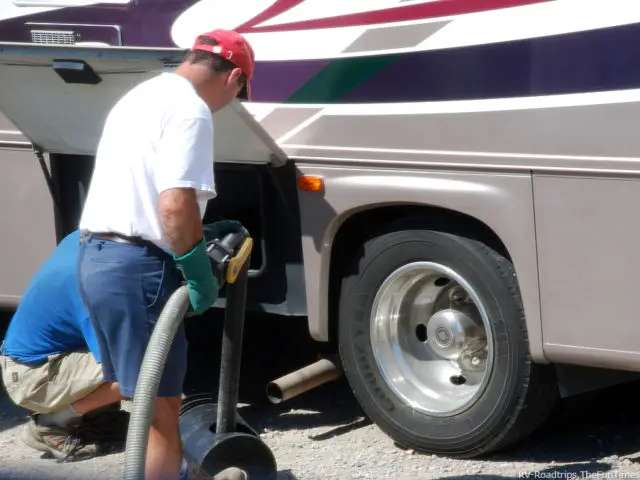The first few times you find yourself behind the wheel of a recreational vehicle, you’ll probably find RV driving to be a little intimidating.
They sure do make big RVs these days, don’t they?
Just because the salesman says it handles like a car, doesn’t mean you should believe him — not completely anyway.
The truth is there are certain situations that require special attention in order for you to stay safe on the road in an RV.
The following tips cover the main ways that RV driving is different from driving any other type of vehicle…
Best RV Driving Tips
Believe it or not, with an automatic transmission, power brakes, and plush captains chairs, an RV can be just as easy to drive as other vehicles.
Plus, it will probably be more comfortable as well!
Here are the unique scenarios that you’ll want to familiarize yourself with before your first solo driving adventure behind the wheel of an RV:
- Before You Drive A Class A Motorhome – everything you need to know — from how to adjust the mirrors properly to finding the most comfortable seat position, plus tips for maneuvering in and out of places in a big motorhome.
- RV Height Issues You Need To Know About – the importance of knowing your RV’s clearance level before you leave home so you don’t have to fear the varying bridge heights that you encounter on your trip.
- RV Width Issues You Need To Know About – which roads motorhomes can legally drive on, which states require an over-sized load permit, and important width issues you need to be aware of.
- How To Master RV Parking & Backing Into Tight Spots – 7 things to keep in mind in order to prevent dinging up your RV’s paint job the first time you try RV parking or backing up in close quarters.
- Making Tight Turns & Taking Corners In City Driving – see how turning is different in an RV than in any other vehicle, plus unique tips for surviving in big cities.
- Towing A Trailer The Very First Time – how to start and stop safely, how to balance your RV load, and how to maintain highway speeds.
- How To Drive Up And Down Hills In An RV – if you’re not careful, you could burn up your breaks on some hills — especially through the mountains.
- Driving An RV In High Winds, Turning Corners & Backing Up – how to deal with wind resistance and turning radius when you’re driving an RV.
- A Reason To Consider RV Driver Training Courses – see why it’s worth it to participate in RV driving classes and other RV school courses.
With many new drivers entering the RV lifestyle every single day, there’s no reason for you to feel that you’re the only one who’s nervous about pulling out onto the highway for the first time.
With the proper preparation, you will feel confident enough to know that RV driving is something you can do safely. Over a period of time, your confidence will increase. Before you know it, driving your motorhome or truck and trailer combination will become second nature.
Enjoying the RV lifestyle is meant for everyone. Yes, you too can safely drive today’s luxury RVs!
This video is a good place to start in your quest to learn how to safely drive a motorhome:
Must read: 12 Ways Driving An RV Is Completely Different From Driving A Car!




